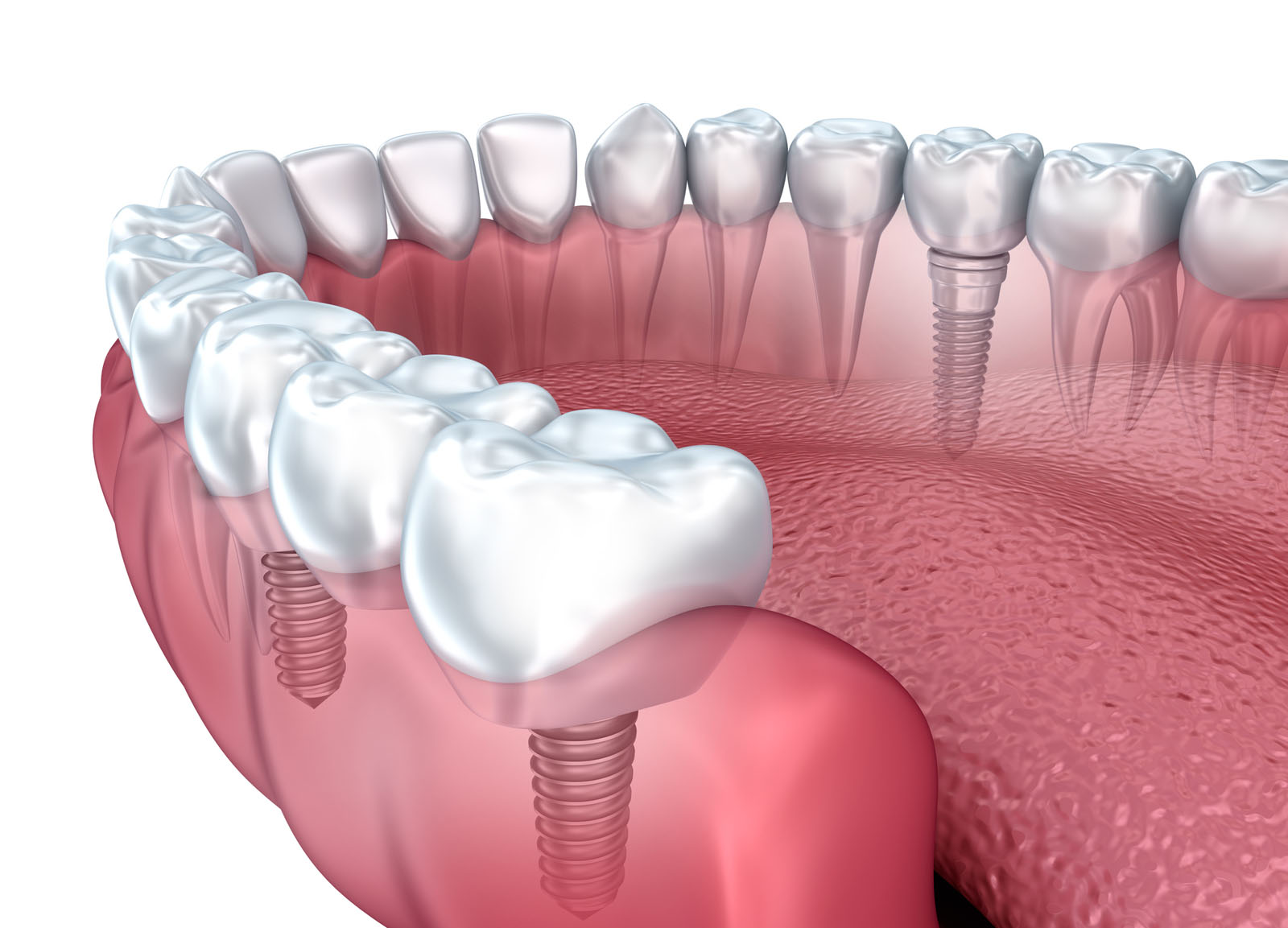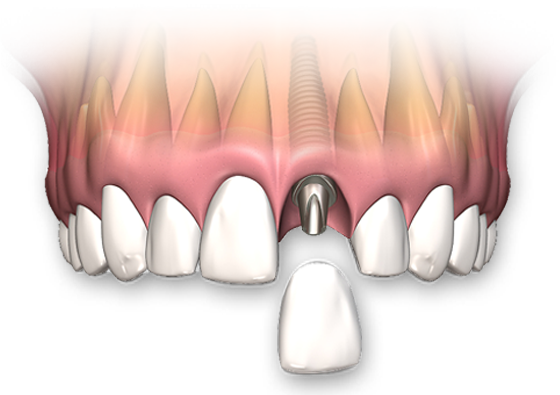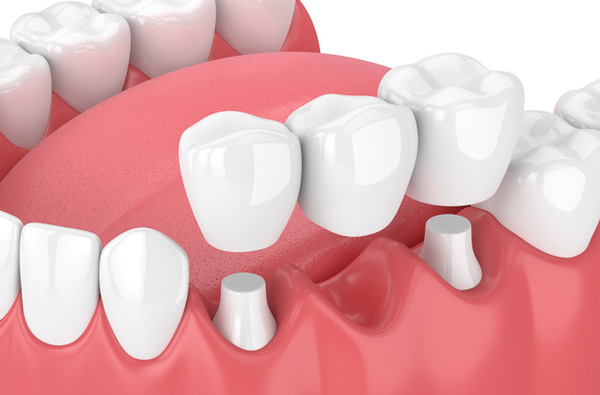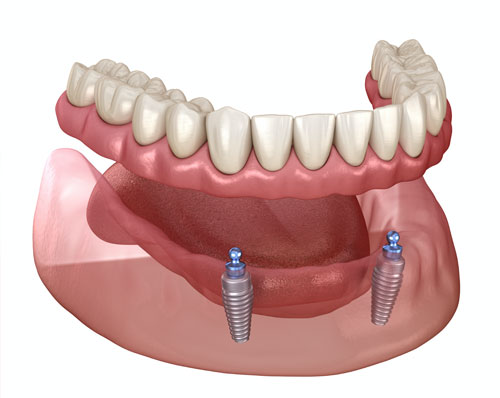






Dental implants restore full chewing ability and allow you to perform brushing and flossing as normal.
Jawbone loss occurs when the tooth root is removed but not replaced. It can cause up to 25% loss in width and height in the first year, and shrinkage continues over the lifetime. Because dental implants replace tooth roots, they prevent and even reverse this loss.
Neighbour teeth will not drift and move when the missing tooth is replaced with an implant. Dental implants also reduce the load placed on the adjacent teeth, making them less likely to crack or break.
A missing tooth gap can act as a trap for food and bacteria.
Unlike dentures, which need to be relined frequently to account for jawbone loss and replaced every 10 years or so, dental implants can last a lifetime with proper care.







If you are missing a single tooth, one dental implant topped with a crown is the best replacement choice. We use high-tech tools and equipment to ensure a precise fit that seamlessly aligns with the adjacent teeth.
Dental implants are small anchors made of a biocompatible metal called titanium that are placed in the jawbone. Dental implants are the replacement of tooth roots in the mouth. Once placed, the anchors begin to fuse with the bone over the course of a few months. After the fusing process, known as osseointegration, abutment posts are inserted into the anchors to allow for the permanent attachment of the replacement teeth. Implants provide a strong foundation for fixed or removable replacement teeth and help maintain the existing bone





To replace three or more adjacent teeth, consider an implant supported bridge. A traditional bridge requires us to remove healthy tooth structure from the neighboring teeth, while an implant supported bridge attaches to one dental implant at each end.
An implant supported bridge is a dental bridge that is secured to two or more dental implants rather than relying on the adjacent natural teeth for support. When a bridge uses natural teeth for attachment, the teeth must be prepared (shaved down) for crowns. Once the bridge is placed, the natural teeth will be subjected to increased stress that can be damaging – particularly if the existing tooth, roots, or surrounding bone structure are already compromised.







If you are missing most or all of your teeth, dentures are a common solution. However, traditional dentures are on a bulky acrylic base and are prone to pinching and slipping. A removable denture can “snap on” to just two implants, while a few implants can support an entire arch of fixed teeth.
Implant supported dentures can be either fixed or removable. This solution requires the placement of two or more implants. If a removable denture is selected, the denture will “snap” on to the implant rather than requiring the use of denture paste or adhesives. Removable dentures can be taken out for cleaning at night. This technique offers many advantages over traditional dentures.
Easy to care for, this solution can simulate the look and feel of natural teeth and stay fixed in place with the implants acting as anchors. Patients will not experience the typical rocking and movement or gum irritation associated with dentures. Dental implant placement can also help alleviate the sunken look that can occur with bone loss in the jaw by stimulating bone growth in the area around the implant. This process is called osseointegration and can also help prevent future bone loss.




